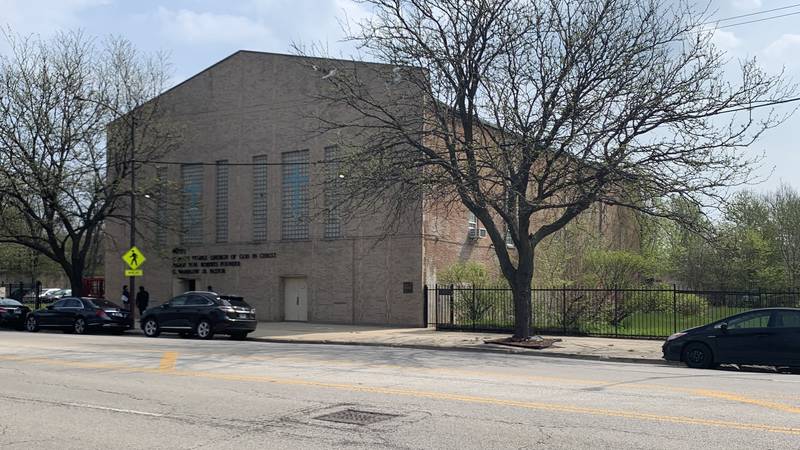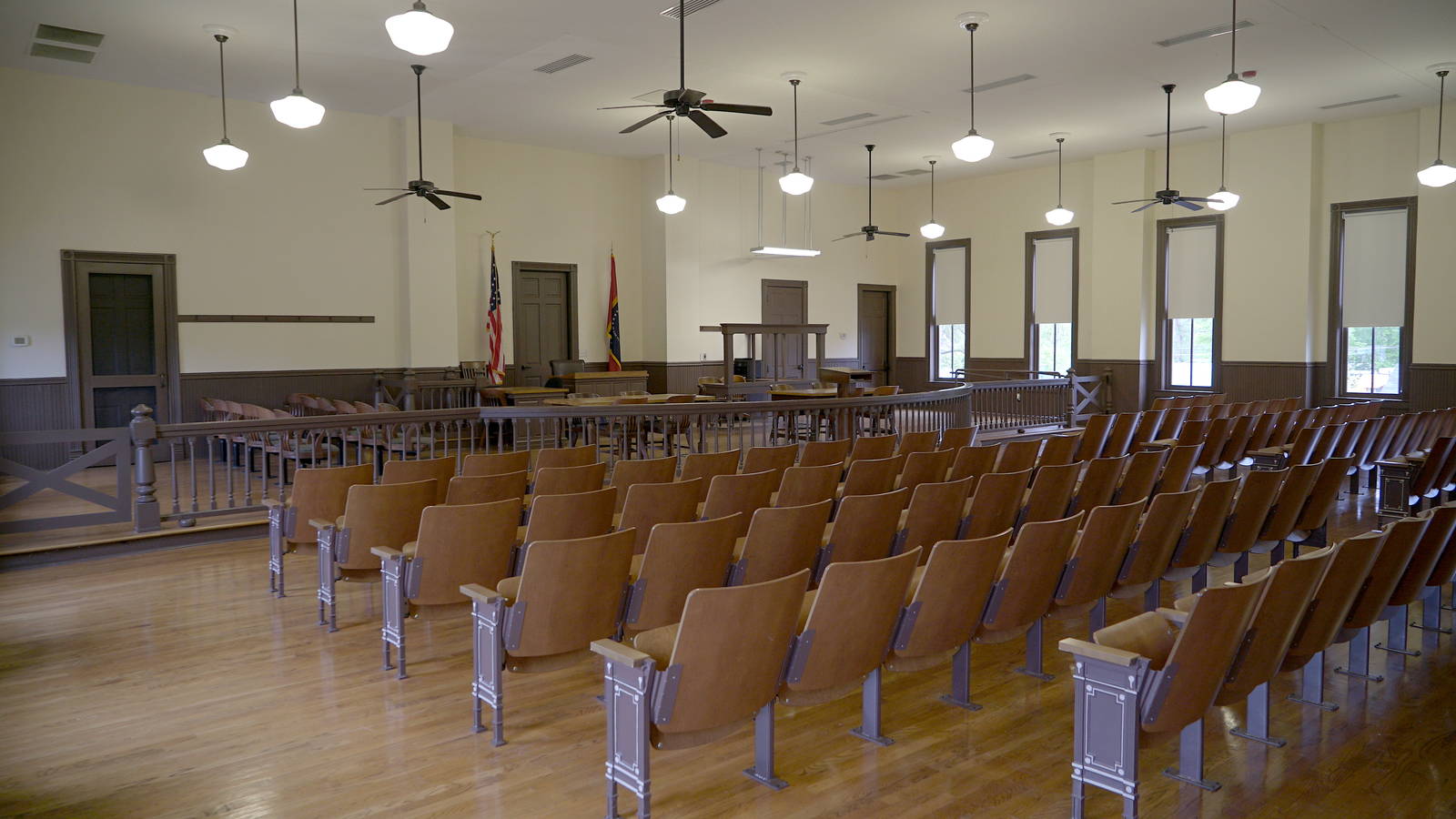The NPCA and its partners have been advocating for years for the creation of a national park site in honor of Emmett Till, a 14-year-old Chicago native murdered in Mississippi, and his mother, Mamie Till-Mobley, became a civil rights icon after her death. death.
Read the frequently asked questions about the possible site and why it is important.
Who were Emmett Till and Mamie Till-Mobley?
Emmett Till was an African-American teenager who grew up in Chicago and had family in the Mississippi Delta. At age 14, he visited Mississippi on vacation in August 1955. He was kidnapped, tortured, and killed by white men after being accused of whistling and making sexual advances at a white woman.
His mother, Mamie Till-Mobley, was an active member of the Chicago community with a particularly close relationship to her son and who became a civil rights icon after his death. She quickly demanded justice for her child, demanding that her coffin be carried home and unsealed, then insisting that her mutilated corpse be shown to the world.
Till-Mobley dedicated the rest of her life to seeking justice for her son, speaking publicly about issues of racism, educating children, and comforting other grieving families. Her long journey was strewn with pitfalls, but her determination and resilience carried her through. She died in 2003.
Is the creation of a park site related to social injustice consistent with the national park system?
Yes, two-thirds of America’s national parks have been specifically designated to interpret historic and cultural sites, and the National Park Service has a mandate to preserve America’s natural and cultural heritage, including the history that may have been neglected or ignored before. This site will tell important stories to complement existing national park sites, such as the Birmingham Civil Rights National Monument and the Selma to Montgomery National Historic Trail.
All these stories are not easy to hear. But these are the stories that need to be protected and told for all to learn. Recent studies show that people of color are significantly underrepresented among visitors to our national parks. As America’s greatest storyteller, the Park Service is uniquely positioned to tell Till’s story with the sensitivity and complexity his memory deserves.
What does the NPCA hope to be able to achieve through this proposed park site?
The stories of Emmett Till and Mamie Till-Mobley are key to revealing more of the full story of the modern civil rights movement. When created, this park would not only tell the story of a boy’s murder, but also of his mother’s grief and subsequent determination to let the world know what racism in America had done to her son. .
A new national park site would honor Till’s history and continue his mother’s work, securing their legacy for generations to come.
We hope the Till site will also help shine a light on the stories of other Mississippi Delta infantrymen – all of whom have made sacrifices, and some of whom have paid the ultimate price, in this long and ongoing struggle for human rights. ‘man.
Why create the park site now?
The fight for justice and equality is endless, as evidenced by the renewed national conversation on race and racism in America. People like Emmett Till and Mamie Till-Mobley forced the nation to face the reality of racism, and their courage indelibly influenced the course of the civil rights movement and the fight for equality. Learning their history can help people continue to consider our past, including the memories of which our country is least proud, and help inform ongoing dialogue.
The story of Emmett Till and Mamie Till-Mobley also serves as an example of how the extraordinary efforts of ordinary people have touched the conscience of the nation – urging us to fight for justice and equality.
Does the Till family support this park site?
Yes. Members of the Till family and friends of Emmett and Mamie enlisted the Park Service to tell the family’s story, hoping to inscribe their memory in American history for future generations to enjoy. learn lessons from. This support includes a personal plea from Reverend Wheeler Parker, Emmett’s cousin and the last surviving eyewitness to the abduction.
Where will the potential park site be located?
The National Park Service has reviewed major civil rights sites in Mississippi for possible designation as a national park site. There are also proposed sites in Illinois where Emmett Till was born, raised, and buried. The possible anchor points in this proposed park site are:
Tallahatchie County Courthouse in Sumner, Mississippi
The five-day murder trial of Roy Bryant and his half-brother JW Milam, the two men who kidnapped and killed Till, took place at this courthouse. Thousands of people came to Sumner to witness the event, including the deceased boy’s mother, Mamie Till-Mobley.
Tallahatchie Courthouse
The Tallahatchie County Courthouse in Sumner, Mississippi, site of Emmett Till’s murder trial.
© Alan Spears/NPCA
After just over an hour of deliberation, the all-white, all-male jury acquitted the men of Till’s murder. A juror told Time magazine: “If we hadn’t quit drinking pop, it wouldn’t have taken this long.” The two admitted to the murder in a magazine article just months after the verdict.
Through a fundraising effort by Tallahatchie County and the Emmett Till Memorial Commission of Tallahatchie County Inc. between 2007 and 2020, the interior of the courthouse was restored to its 1955 appearance and an Emmett Interpretive Center Till opened across the street. The center offers historical tours of the courthouse and a museum with information about Till’s story and the trial. A Confederate statue, the creation of which was spearheaded by the United Daughters of the Confederacy, has remained in place near the building’s north entrance since 1913.
The courthouse was added to the National Register of Historic Places in 2007 for its role in Till’s history and its Richardsonian Romanesque architecture. That same year, the Emmett Till Memorial Commission issued a public apology on behalf of the people of Tallahatchie County to the Till family.
Roberts Temple Church of God in Christ in Chicago
Till’s open-casket memorial service was held at this church in early September 1955, drawing tens of thousands of people who responded to Mamie Till-Mobley’s public cry for the world to see what the Mississippi racists have done to his son.
Church in Chicago that hosted Emmett Till’s funeral

Roberts Temple Church of God in Christ, located in Chicago. In 1955, the church hosted the funeral of 14-year-old Emmett Till after his murder in Mississippi. Thousands of people attended, people thronging the streets and sidewalks.
© Alan Spears/NPCA
The fact that Till’s body even arrived in Chicago from Mississippi demonstrates Mobley-Till’s determination and resilience. She paid nearly a year’s wages to have her body transported by train and insisted that the casket be opened, despite agreements signed by funeral directors in both states to keep it sealed.
Inside the church, the coffin held Till’s bloated and disfigured corpse under a thick pane of glass. About 25,000 people viewed the body during the Saturday service. The church was packed to capacity, while another 10,000 people stood outside to listen to the service over the loudspeakers.
So many people showed up for the viewing that Till-Mobley decided to delay her son’s burial for three days to accommodate the thousands more who wished to pay their respects. The church was open from 6 a.m. to midnight, with people queuing for over an hour.*
In 2006, city leaders declared the Roberts Temple Church of God in Christ a landmark of the city of Chicago in recognition of the impact of funerals on American history.
Is Emmett Till buried in Mississippi or Illinois?
Till was buried in Burr Oak Cemetery in the Chicago suburb of Alsip, Illinois – twice. The first was on September 6, 1955, and again 50 years later after his body was exhumed for an autopsy. Federal authorities hoped the proceedings would shed more light on how he died, as no such formal examination had been conducted at the time of his death. Tests carried out in 2005 confirmed that the body was that of Till and that he died of a gunshot wound to the head.
Mississippi authorities attempted to bury Till in a church cemetery even before his mother was notified of the body’s discovery. Whether the attempted burial was due to the body decomposing or a cover-up of the crime, Till’s great-uncle stepped in and stopped the hasty burial.
How was the NPCA involved in defending this park site?
The NPCA works with members of the Till family, the Emmett Till and Mamie Till-Mobley Institute, the Emmett Till Interpretive Center, the National Trust for Historic Preservation and Latham & Watkins LLP.
٭From Devery S. Anderson’s 2015 book, “Emmett Till: The Murder That Shocked the World and Powered the Civil Rights Movement.”

